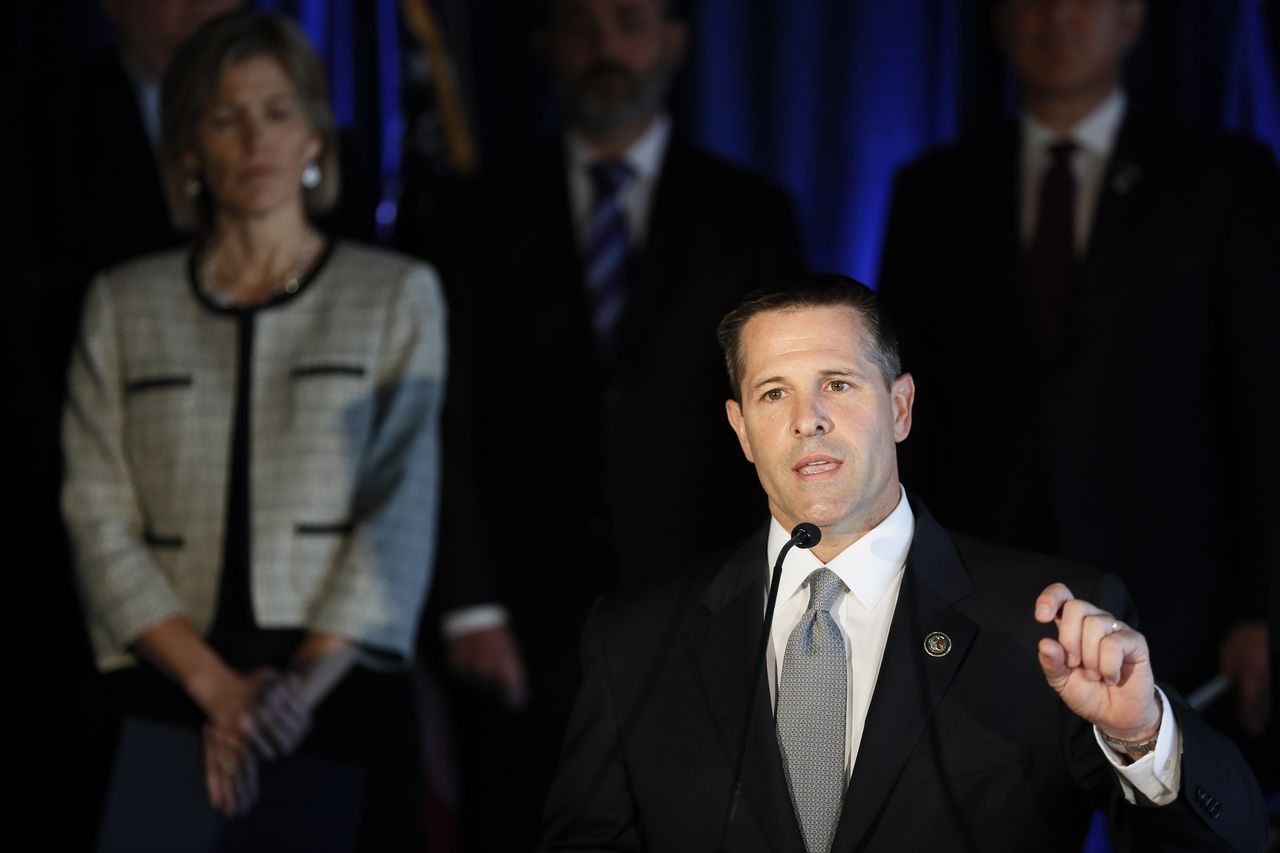How many Alabama prison inmates are there for violent crimes? State says almost all
The fight over the operation and purpose of Alabama’s prisons often centers around this question: how many people incarcerated in the state’s prisons committed violent crimes?
For those supporting strict sentences and tough-on-crime measures, it’s nearly all of them. In debates and presentations, it’s said that about 80% of the people in the custody of the Alabama Department of Corrections are violent criminals.
Victims of Crime and Leniency (VOCAL), a victims rights’ group, has used the number in opposing paroles for inmates.
“If they get out, they could kill someone else,” said Janette Grantham, VOCAL’s executive director, during a Feb. 2 interview. “And if I didn’t protest, and they did that, I would have to live with that – and I don’t intend to do that.”
Criminal justice reform advocates say the number reflects overzealousness by legislators.
“When we think about people dealing drugs, a layperson oftentimes isn’t going to define that as a violent offense, but the statute does,” said Alison Mollman, senior counsel at the ACLU of Alabama. “These are not all murders, they are not all rapes, they are not all kidnappings, they are not crimes against people necessarily. It is just that the state of Alabama has a wide definition of what constitutes a violent offense.”
The issue is critical as Alabama continues to grapple with a prison overcrowding crisis that has led to violence and death in the state’s correctional facilities and brought a lawsuit from the U.S. Department of Justice over inhumane conditions in the prisons. At least 32 people died in Alabama prisons between January and mid-March, according to Alabama Appleseed, a criminal justice reform group. At least three were homicides.
The U.S. Department of Justice has also raised questions about Alabama’s definitions of violent crime. In a 2019 memo, obtained by Alabama Reflector, then-U.S. Attorney Jay Town questioned Alabama classifying three offenses as violent.
This photo shows a sign that reads, “HELP,” in the window of an inmate cell seen during a tour along with state officials at Holman Correctional Facility in Atmore, Ala., Tuesday, Oct. 22, 2019. State officials have toured the state prison that Alabama’s corrections commissioner says illustrates the state’s problem with aging facilities. (AP Photo/Kim Chandler)AP
Using federal definitions, Town wrote that as many as 1,200 inmates in Alabama prisons would be considered nonviolent, a classification that could have a significant impact on their prospects for their chances of parole.
“The impact of such reclassification may have far-reaching effects on the future prison population in Alabama, the ability for greater implementation of prevention methods, and allow Alabama to further abate against the Eighth Amendment issues in the Alabama Department of Corrections,” Town wrote.
A spokesperson for the U.S. The Department of Justice said the DOJ had no comment on the memo on Friday.
The 83%
Each year, the Alabama Sentencing Commission publishes statistics on the state prison population. “As of this past October, 83 percent of the in-house prison population was serving a sentence for a violent offense (up from 81 percent last year),” the commission said in its 2022 report. The number fell to 80% in the 2023 report.
That statistic is frequently cited by supporters of tough-on-crime measures, as a sign of the dangerous nature of the prison inmates.
“I am familiar with that number, yes,” said Rep. Matt Simpson, R-Daphne, a member of the House Judiciary Committee. “That is information we received from the (Alabama) Attorney General’s Office, who received that information from the (Alabama) Department of Corrections and the (Alabama) Sentencing Commission.”
Bennett Wright, the director of the Alabama Sentencing Commission, said the number comes from definitions in Alabama law, created by the Legislature.
“There is a definition rather, what is a violent offender,” Alabama Sentencing Commission Executive Director Bennet Wright said. “What is actually defined in the code of Alabama is what the Alabama Legislature considers a violent offense.”
Alabama classifies 53 offenses as violent. The ACLU’s Mollman said 45 of them are “offenses against persons” that include obviously violent crimes like murder, assault, rape and sexual offenses.
There were two Mollman considered property crimes, another two as drug offenses, and four she categorized as “other offenses.” Mollman said that it is harder to determine whether these are violent. She cited one case when one of her clients was convicted of third-degree burglary, considered a violent offense by Alabama.
“He had broken into an unoccupied business, went through a window, one night and stole some items,” Mollman said. “The person didn’t have any weapons, didn’t hurt any people, but he went into a building and he took some items. That fits the definition of violent offense in Alabama, but most people would consider that a property offense.”
The 2022 Sentencing Commission report issued by the Sentencing Commission lists a few of these. Drug trafficking drugs ranked 12 of the top 25 offenses of people serving time in state prison, with 418 people recorded. About 411 people served time for third-degree burglary in the third degree. Those offenses, although no overt violent act occurred, contribute to the percentage that many reform advocates criticize.
State agencies can also reach different conclusions on what constitutes a violent crime. In the Alabama Department of Corrections’ final statistical report for 2022, the figure is closer to 68%.
A ‘more expansive’ definition of violence
Town’s 2019 memo, part of discussions between DOJ and ADOC over addressing Alabama prison conditions, said that violent offenses meet at least one of four criteria. They involve use of a deadly weapon, dangerous weapon or physical force; substantial risk of injury to a person; a non-consensual sexual offense, or an act that is “particularly reprehensible.”
Town wrote that some of Alabama’s violent offenses might be considered nonviolent under federal law.

Jay Town, U.S. Attorney for the Northern District of Alabama, speaks beside members of Appalachian Regional Prescription Opioid Strike Force, during a news conference, Wednesday, April 17, 2019, in Cincinnati. (AP Photo/John Minchillo)AP
“In the fifty or so offenses listed as “violent offenses” in the statute, at least three offenses are worthy of review as to whether or not they contain an element of violence or threat of violence,” he wrote. “These offenses might be as follows: Burglary in the Third Degree, Drug Trafficking Offenses, and Elder Abuse in the Second Degree. These offenses might be justifiably reclassified as ‘non-violent offenses’ by ‘taking into account’ the elements of these offenses.”
Using the violent crime defined by state statute, Town found that 15,902 inmates who could be considered having committed a violent crime, about 75.5% of felony inmates in ADOC custody at the time. However, when applying the federal definition, that figure declined to 14,717, roughly 69.8% of the felony inmate population.
“As it relates to burglary in the third degree, the state of Alabama casts violent offenses more expansively than that of the federal government,” Town, now general counsel for a Huntsville defense contractor, said in an interview Friday. “The answer to that question has to be yes. Certainly, anytime there is a crime victim that has suffered bodily injury or death at the hands of a defendant, there is no arguing that it is a violent offense.”
Deterrence and rehabilitation
For now, the arguments appear to be making little headway among Republican legislators. In the first full week of the 2023 session, House and Senate committees swiftly passed legislation limiting the ability of inmates to get time off their sentences for good behavior. A bill sponsored by Rep. Chris England, D-Tuscaloosa, that would require the Alabama Board of Pardons and Paroles to adhere to release guidelines stalled in the House Judiciary Committee.
Simpson said he believes the violent crime definitions in statute are correct.
“Murders, rapes, robberies, burglaries, people breaking into your home,” he said. “Burglaries are a violent offense as long as they are a home dwelling. I think it is violent if you are breaking into homes. I do think that is violent. You don’t know if anyone is home there or not.”
That perception issue persists partially because of a criminal justice reform measure that passed back in 2015. In an effort to address overcrowding in state prisons, the Legislature approved legislation sponsored by then-Sen. Cam Ward, R-Alabaster, that limited incarceration for technical violations of probation and parole; authorized split sentences and mandatory supervision for inmates convicted of Class C felonies and created a Class D felony for the least serious, nonviolent offenses.
The proposals also redefined third-degree burglary to apply to habitations, and separated marijuana from drug possession statutes.
The law did alleviate prison overcrowding. The prison population fell from 24,435 in June 2015 (185% capacity) to 21,154 (170%) in January 2020, just before the COVID pandemic erupted.
“In 2015-2016, we did what we call declassification, we set a new classification, which kind of got rid of your low-level criminals out of prison, set them free, they walked,” said Senate Majority Leader Bobby Singleton, D-Greensboro. “That was almost 1,600 people in that period of time. Therefore, you don’t have a lot of people in prison now for drug use or just dealing drugs, unless they are trafficking drugs or in the commission of another crime.”
The changes also meant that violent offenders were the only ones sent to prison.
“I know that we made it very difficult to send people to prison in 2015 with the guidelines,” Simpson said. “Your drug offenses, your theft-of-property offenses, your forged instruments, those people don’t go to prison — they don’t.”
But there are inmates in prison for crimes not necessarily involving harm to another person. According to the 2022 Sentencing Commission report, 298 people were in ADOC custody in October 2021 for possession of a controlled substance. Another 449 were incarcerated for first degree theft of property. 247 people were in custody for first degree receiving stolen property.
The argument over the classification also shows a deeper divide over the role of the criminal justice system. For those who believe in harsher sentences, incarceration is about personal reform, but also deterrence.
“If you hit me and I come back at you with a baseball bat, and then I am out of jail in four years, what is to stop you from saying, ‘well, he hit me, and it’s only four years and you almost caused my death,’” Simpson said. ‘Next time, when he gets out, I am going to do that too.’
“You have got to deter people,” Simpson said. “There has to be that fear of going to prison. It has to be in our society. There has to be that concern, that you tell the citizens in general, ‘if you commit this offense, you are going to go to prison.’”
But the attitude also contributes to a stark drop in parole grants by the Alabama Board of Pardons and Paroles. The body only paroled 10% of inmates in 2022 and is on pace for an even lower rate this year. Mollman said the broad approach to violent crime only hardens those attitudes.
“I think when people hear the term violent, it is understandable to be fearful,” she said. “It is about creating fear of the people who are incarcerated, and what they might do to people if they are released.”
